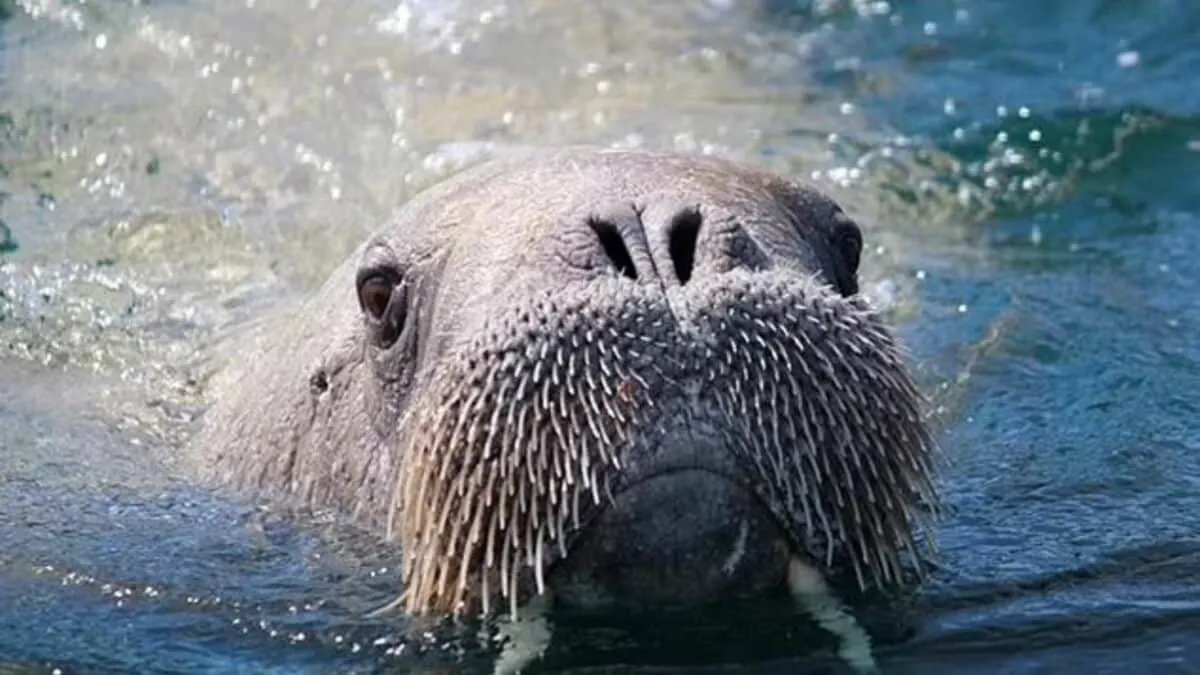The Walrus calls ice-covered coastal regions around the world home. Come and explore this amazing animal further through this article.
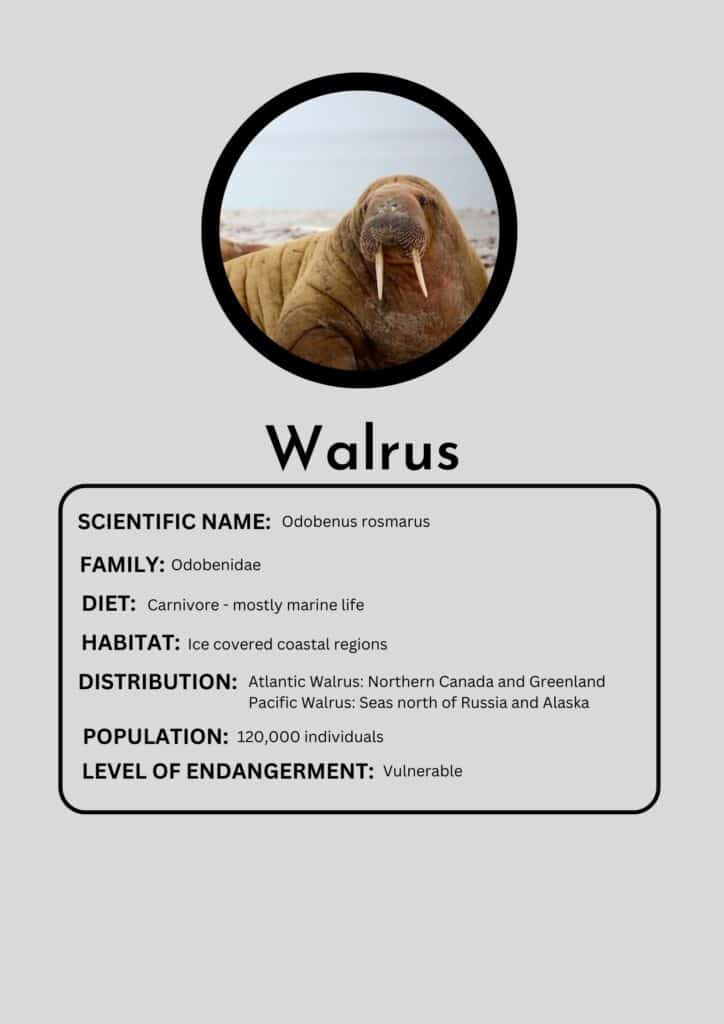
Appearance
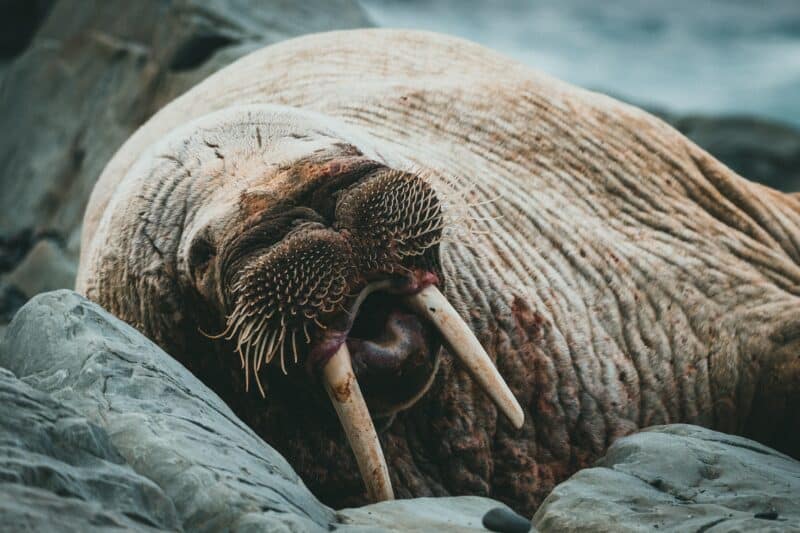
With their huge and distinct tusks, the Walrus looks like something that has been around since dinosaur times. In fact, it’s the only species within its family, Odobenidae, that still exists today. Sometimes they go by the name “Morse”. There are two subspecies; the Atlantic Walrus and the Pacific Walrus – which inhabit the Atlantic and Pacific oceans respectively.
Walruses are chunky creatures padded with lots and lots of blubber. An adult male usually weighs 1,800 – 3,700 lbs, and females weigh a third of this. Some males of the Pacific subspecies pass the 4,400 lbs mark – equivalent to two small cars.
Its hide-like skin is cinnamon-colored with lots of wrinkles and covered with red stubble. Their trademark tusks, which are used to assert dominance amongst males, measure 3 feet. Tusks also function to cut into ice and to hoist their heavy bodies out of the water. The tusks are in fact their canines and continuously grow throughout their lives
Thick whiskers, called vibrissae, cover their snout. They are very sensitive and provide them with high tactility which helps them identify prey.
Distribution and Habitat
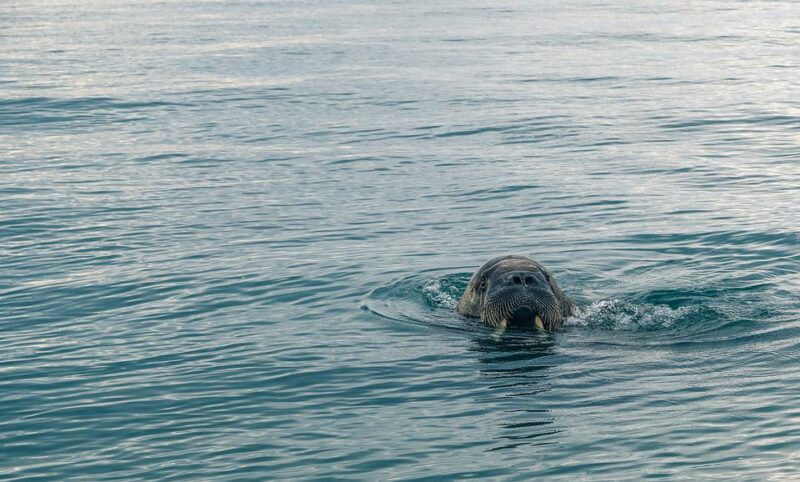
The Atlantic Walrus resides on the coasts of Northern Canada and Greenland. Pacific Walruses live in the seas north of Russia and Alaska, and during summertime, they migrate to the Chukchi Sea.
They live in large groups containing up to 100 Walruses, alluding to their gregarious nature – meaning that they are social animals.
Walruses do not typically venture out into deep waters. Rather they prefer staying close to the coast and nearby ice shelves, frequently hanging out on ice floes.
Commercial hunting of Walruses became a trend in the 50’s and 60’s, causing their population to shrink to 50,000 – 100,000 individuals. As a reaction to this remarkable population drop regulations were put in place. A short-lived population growth was seen, increasing to 200,000 individuals, before shrinking again. At present, their population is estimated to be 120,000, – making them a vulnerable species.
Diet
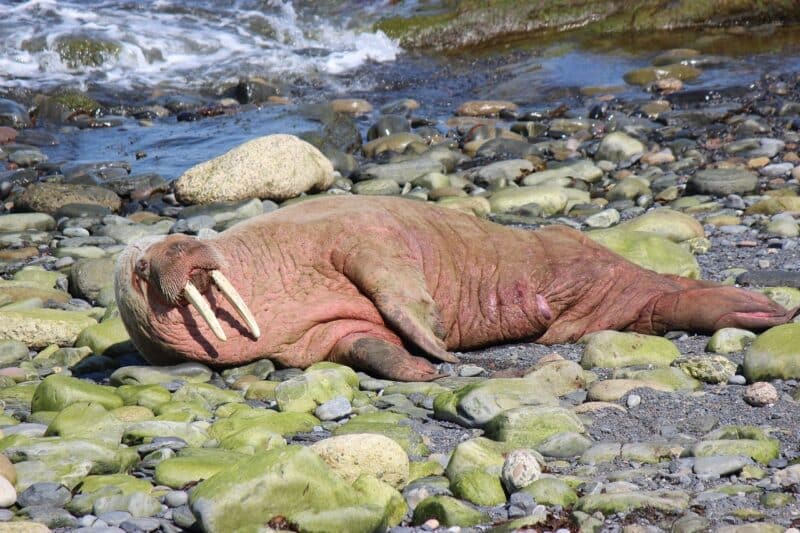
A Walrus’ diet is carnivorous. They are opportunistic feeders, feasting on all kinds of marine life. They forage for food on the seafloor, typically harvesting crabs, shrimp, sea cucumbers, fish, mollusks and the like. Much like humans they go crazy for shellfish, which is their favorite. By creating a vacuum with their lips and tongue, they can extract the shellfish’s meat. Occasionally they might consume small seals as well.
They have the ability to dive to depths of 1,600 feet but rarely do so. When feeding they do so in shallow waters, containing their dives to 250 feet.
Because they feed right by the ocean floor where little sunlight reaches they locate their food by means of their whiskers. The whiskers contain blood vessels and nerve endings, which makes them hypersensitive.
Due to their large size and impressive tusks, they are themselves very seldomly preyed upon. Their natural predators are limited to Polar Bears and Orca Whales, and in which case they mostly target Walrus calves.
Mating and Life Cycle
Contrary to the majority of our planet’s species, the mating of Walruses is not only dependent on the female being fertile – males are also only fertile during a certain period. Males’ fertility window only occurs in February and therefore this is the breeding season.
To find a mate, the males will display dominance by showing off their tusks, the bigger the better, and fighting with other males. Moreover, they perform vocal displays underwater to attract females. Copulation equally occurs underwater.
After fertilization, the egg is not implanted in the female’s uterus immediately but after 3 – 4 months. Evolution has designed this delay to ensure that calves are born when they have the greatest chance of surviving; which is during April – June.
Due to the delayed implantation, Walrus mothers are pregnant for an extended period of 15 – 16 months. A pregnancy delivers a single pup that already weighs 99 – 165 lbs when newborn. Pups remain at their mother’s side for a few years and only at 3 years old will they test their own wings (read: flippers).
When reproducing, Walruses rely heavily (quite literally) on pack ice. As a result of climate change, the thickness of the pack ice is becoming thinner and thinner. Due to their humongous size, they cannot use thin ice, thus the size of their habitat becomes significantly smaller.
Females become sexually mature at age 7, and males slightly later; between 8 – 10 years old. This is indicative of their long life cycle, Walruses frequently live to see their 40th birthday.
Fun Facts – That We Bet You Didn’t Know
One of the many adaptations that enable them to withstand the arctic climate includes them being able to slow down their heart rate when swimming in the icy waters.
As previously mentioned they are highly social animals, and moreover extremely vocal. When they are sunbathing on ice floes they frequently bellow and snort – very loudly – to communicate with each other.
Although poaching of Walruses has been made illegal the native communities living near their habitat are granted concessions. They are allowed to kill a small number for sustenance each year.
During the 18th and 19th centuries, Arctic explorers would consume Walrus meat. However, this was only when absolutely necessary as their meat is not really tasty. On the other hand, their tongue was a delicacy.
You might also like to read about Manatees.
Thank you for reading about the Walrus. Also, have a look at our other mammals articles!
- Octopus Stuck to Diver’s Back and Won’t Come Off - April 25, 2024
- Magpie Bird Is Reunited with Her Dog Best Friend - April 24, 2024
- Dog Saves Another Dog From Drowning in Fish Pond - April 23, 2024

